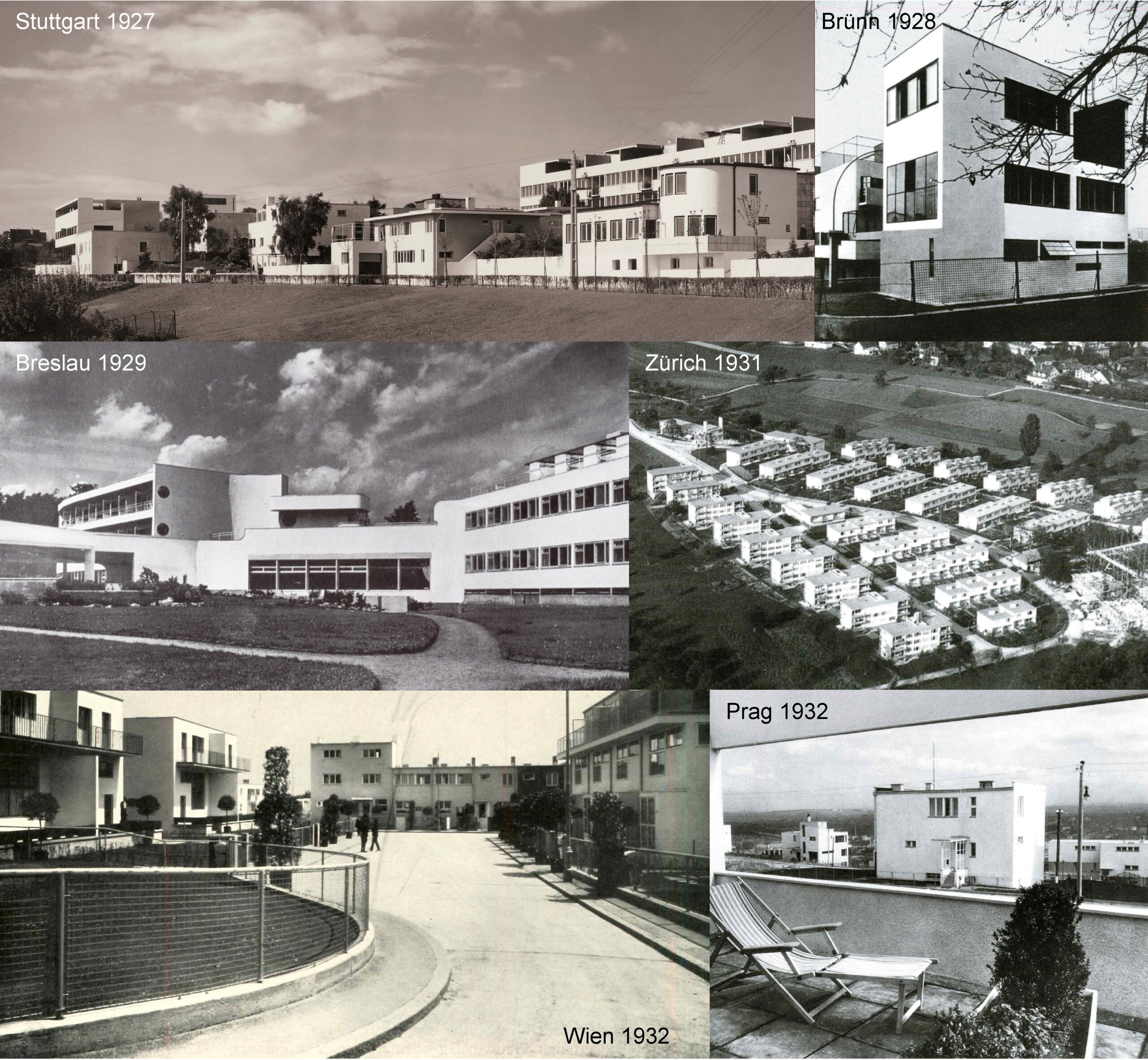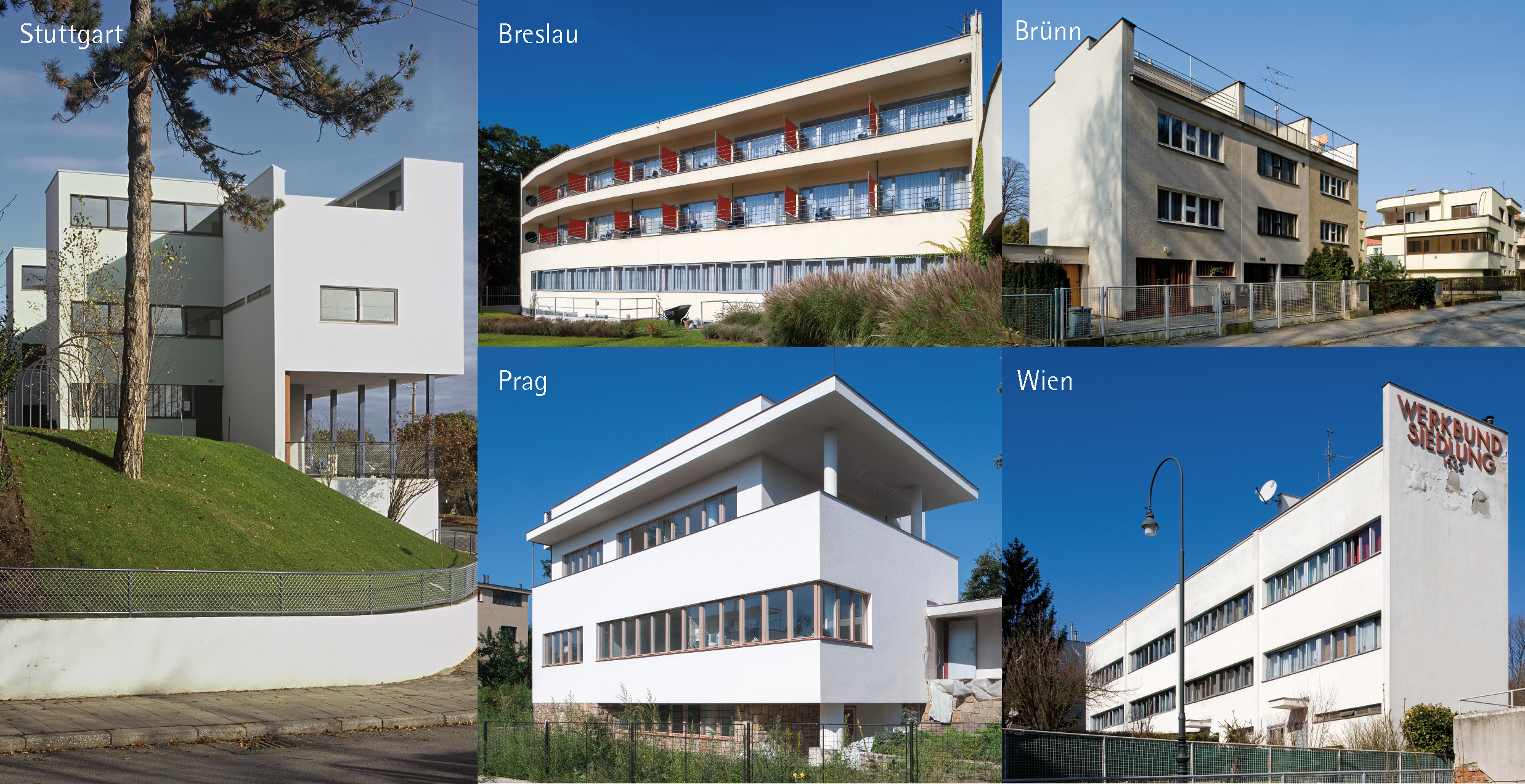This website uses cookies so that we can provide you with the best user experience possible. Cookie information is stored in your browser and performs functions such as recognising you when you return to our website and helping our team to understand which sections of the website you find most interesting and useful.
Werkbund Estates in Europe


The EHL Site
The Werkbund estates are a serial site of estates aroused by the Werkbund associations of five European countries between 1927 and 1932. They were built in Stuttgart, Brno, Wroclaw, Zürich, Vienna and Prague. They influenced 20th century architectural trends considerably. The estates constitute a highly significant cultural legacy, which are still the subject of intellectual debate and a destination for multinational visitors.
As a group, the Werkbund estates constitute an outstanding testimonial to the shared beginnings, and spread throughout Europe, of modern architecture. They illustrate the interconnections between European avant-garde figures, whose cultural interrelations and architectural theories traversed national boundaries.
The history of the estates reflects political and social shifts in 20th century Europe: democratic departures following WWI, denigration of the internationally minded avant-garde by nationalist and racist regimes and splitting into East and West after WW2.
Based on the same objectives, the estates developed differently in a newly divided Europe. Following the fall of the Iron Curtain, their paths have again converged.
Our 2013 Stuttgart-founded transnational network enables exchanges on multiple levels; conservation; and communication – particularly to young people – about the birth of modern architecture as a shared European achievement.
European dimension
The Weissenhof estate in Stuttgart was constructed in 1927, one of the first and most important examples of ‘New Building’ (also known as ‘New Objectivity’).
The German Werkbund architecture exhibition advanced new ways of addressing the housing shortage that followed WWI, and showed how healthy living quarters could also be efficient and affordable buildings. Seventeen European avant-garde architects were invited to draft solutions suitable for ‘modern city-dwelling’. These experimental buildings today represent a unique manifesto for the ‘classic’ modernist approach.
The development inspired Werkbund associations in other European countries; estates sprang up in Wroclaw, Brno, Prague, Vienna and Zürich. Based on the same objectives, these developed differently after WWII in a newly divided Europe.
Following the fall of the Iron Curtain, their paths have again converged. The transnational network is a perfect example for the united Europe and enables exchanges on multiple levels; conservation; and communication – particularly to young people – about the birth of modern architecture as a shared European achievement.
Preservation, research, and information campaigns on the subject of the Werkbund Estates 1927-1932 as indicators of the developments within 20th century European cultural history.
The organization
The Werkbund estates exist today as an attraction for international visitors. Stuttgart is the lead partner of the common network. Stuttgart, Vienna, Wroclaw, Brno and Zürich already possess the necessary infrastructure for visitors, and in Prague an important single project is currently under way.
Some of the estates already belong to local networks that connect local architectural communities, universities and cultural institutions. Trained guides take visitors on tours through the estates.
